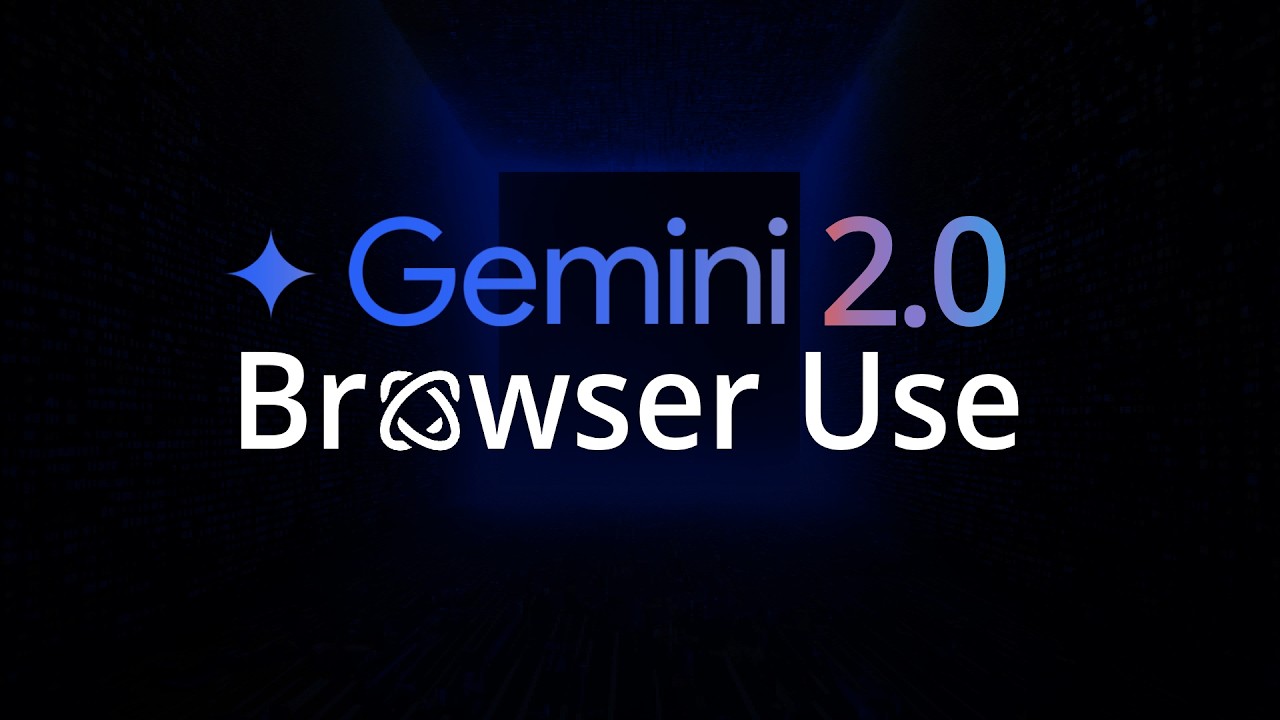The video discusses the integration of Google’s Gemini 2.0 models into browser applications, particularly through an open-source project called Browser Use, which has shown strong performance in browser benchmarks. The speaker demonstrates the setup and testing of the software, highlighting its capabilities and potential use cases while cautioning against using it for sensitive tasks.
In December, Google announced the Gemini 2.0 models alongside Project Mariner, which aims to utilize Gemini for browser applications. While Project Mariner is still in testing and details are under wraps, the speaker explores how open-source projects can integrate with the new Gemini models. One notable project is from a startup called Browser Use, which has shown promising results in browser use benchmarks, even outperforming Project Mariner. They have released an open-source version of their software, allowing users to experiment with various models, including the Gemini models.
The Gemini 2.0 Flash model, now generally accessible, is highlighted for its speed and multimodal capabilities, making it suitable for browser tasks. The speaker discusses the setup process for the Browser Use project, which involves cloning the repository and ensuring necessary dependencies like Playwright are installed. Users can run the software in a Docker environment, and the speaker emphasizes the importance of using older computers for such automation tasks, as they do not require a GPU and can leverage cloud models.
Upon exploring the software, the speaker notes that the project has not yet updated to the latest models, specifically the Flash 2.0 Pro. They demonstrate how to modify the code to include these newer models and highlight the use of LangChain for API calls, making it easy to integrate other model providers. The speaker successfully configures the application to use the Gemini models and begins testing its capabilities by asking it to find the price of a specific product on Amazon.
During the testing phase, the speaker observes that while the software can navigate to Amazon and perform searches, it sometimes struggles to identify the correct product. After refining the prompt to provide clearer instructions, the software successfully retrieves the desired information. The speaker also mentions the potential for using the software for deeper research tasks, although they suggest that scraping might be a more efficient method for gathering information across multiple web pages.
The video concludes with the speaker reflecting on the broader implications of such browser automation tools and their potential use cases, such as automated ticket purchasing or reservations. They express caution about allowing the software to handle sensitive tasks, like managing credit card information, due to its current limitations. The speaker invites viewers to share their thoughts on potential applications for this technology and speculates on the future of AI services, suggesting that companies may find more value in providing services rather than just APIs.
